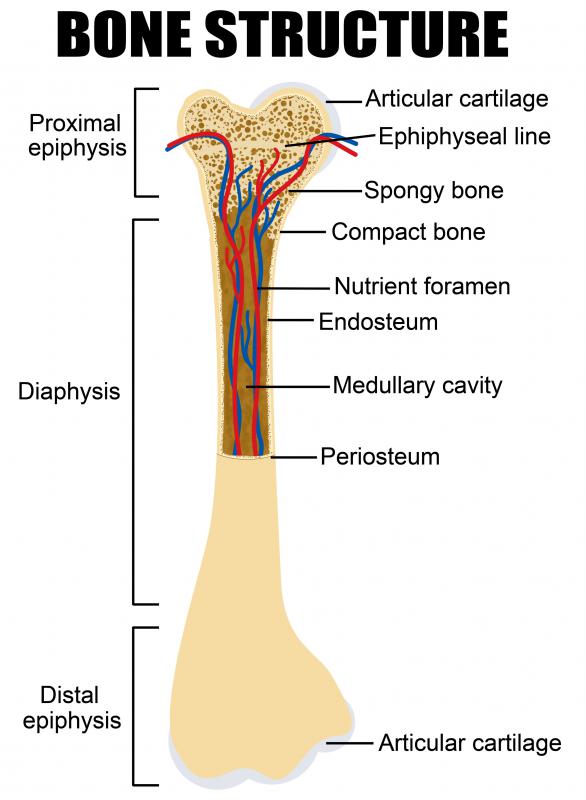At WiseGEEK, we're committed to delivering accurate, trustworthy information. Our expert-authored content is rigorously fact-checked and sourced from credible authorities. Discover how we uphold the highest standards in providing you with reliable knowledge.
What is an Intraosseous Infusion?
An intraosseous infusion is an emergency medical procedure performed on a patient when immediate vascular access is needed for delivering blood, fluids or medication. This procedure is an alternative to the intravenous catheter, which cannot be used in certain patients because of the risks or difficulties. In the intraosseous infusion procedure, the access route is typically via one of the patient’s long bones.
Establishing an intravenous route is of crucial importance in life-threatening emergency situations. The intravenous catheter is the most commonly used procedure for gaining intravenous access, but in children younger than 6 years old, catheter insertion is sometimes difficult if not impossible. In these cases, intravenous catheterization is not attempted, and the alternative intraosseous method is used instead. In addition, intraosseous infusion is used in any situation as an alternative method after three failed attempts at intravenous catheterization.

The marrow of long bones has access to venous circulation via a network of blood vessels that connect to a central drainage canal in the bone and from there into veins that connect to the central circulation system. The main advantage of the intraosseous route is that it cannot collapse, because of the support provided by the bone itself. In patients with peripheral vein collapse, the intraosseous route is therefore a highly useful method of administering necessary fluids and medication.

In the intraosseous infusion procedure, the most common route of access is the tibia of the leg. If this part of the leg bone cannot be used because of fracture, the femur generally is used instead. During the procedure, the calf is sterilized and anesthetized before the infusion needle is inserted through the skin and tissue to the bone. The needle is inserted directly into the bone and gently advanced through the bone tissue until it researches the marrow.
There are risks and potential complications of intraosseous infusion that are not present for intravenous catheterization. The most common complication is called extravasation, which occurs when fluids administered via the needle leak from the bone into the tissues. This complication is associated with imperfect needle placement. Possible consequences of extravasation depend on the fluids being administered; some medications and fluids can potentially cause damage to surrounding muscle tissue.
The insertion of the needle into bone sometimes can lead to infection of the bone or tissues. This is a rare complication that sometimes occurs when the site of needle insertion is not sanitized before the procedure begins. An incorrectly placed needle can cause an injury to the growth plate of the bone. When this occurs in young children, it can cause abnormal bone growth.
AS FEATURED ON:
AS FEATURED ON:












Discuss this Article
Post your comments